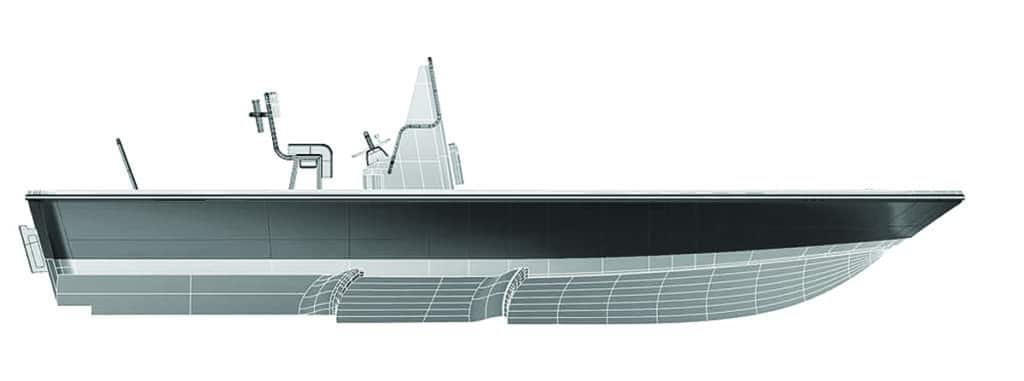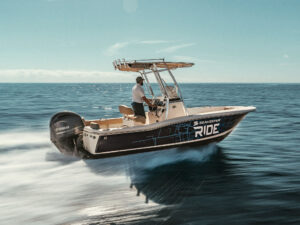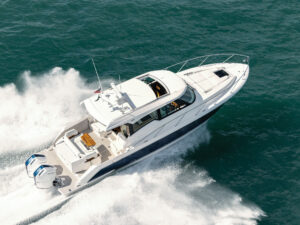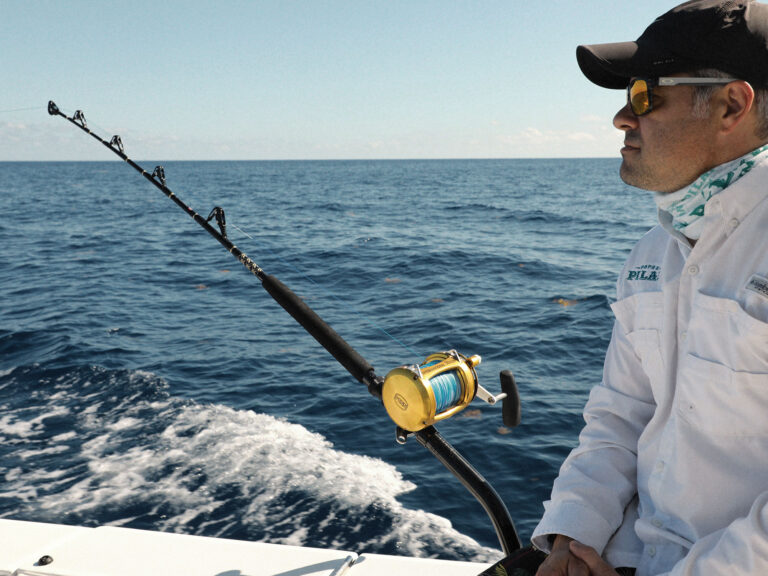
The stepped hull, in modern application redefines the standards of efficiency and performance. Companies like Contender, SeaVee, Cobia, Sea Born and others offer new variations. So why all the fuss about this latest trend? Quite simply: performance. Two top marine architects shed light on how stepped hulls work and the reasons behind their resurgence.
“Stepped-hull designs let the boats with a larger deadrise in the bow ride flatter in the water,” says Jeff Seyler, a naval architect since 1973 who has worked with Wellcraft, Robalo and Canyon Bay over his long career, and is currently designing the Sea Born FX models. “By adding steps, you achieve more speed with less horsepower or more fuel efficiency with the same horsepower.”

More speed and efficiency are achievable because notches or steps in the hull bottom reduce the amount of wetted surface, the part in contact with the water. That, in turn, reduces drag to produce a smaller wake. Air friction is also part of the equation. As the hull moves forward, water is displaced, creating the wake. The energy that goes into making that wake is yet another component of friction. “Steps also create aeration that further reduces drag, but to a lesser degree,” Seyler explains.
“Most stepped hulls are developed by the designer or builder based on collective knowledge and experience.” says Darron Roop, a 20-year veteran architect and the designer of stepped hulls for Cobia and Pathfinder. “The biggest benefits of steps are speed and efficiency. If you run fast and cover a lot of water, you’ll save money with a stepped-hull boat or go faster with the same amount of fuel. It’s all based on the wetted surface pattern.”
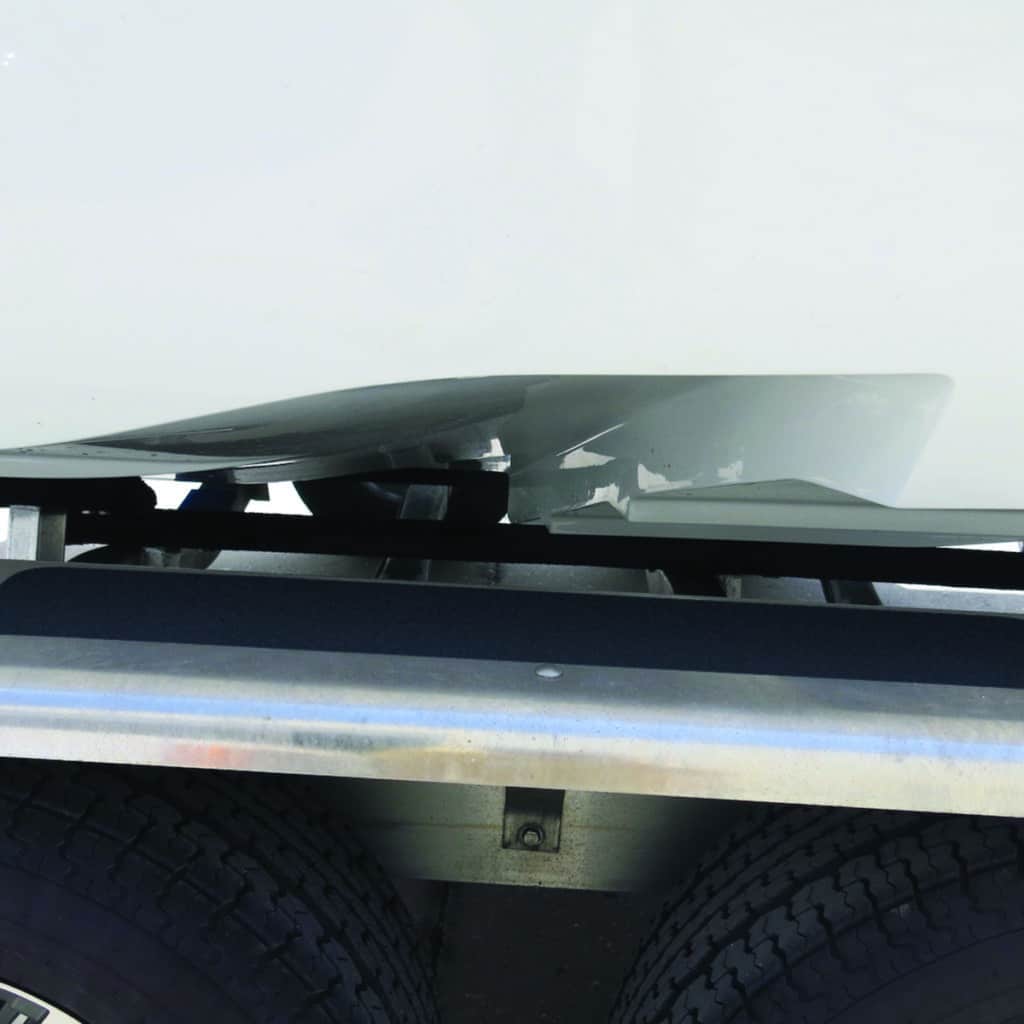
There are some trade-offs to adding steps, however. At the planing point, stepped hulls are less efficient than traditional designs because the steps act as brakes. But once the boat is on top, they provide lift and maintain a flat running attitude.
Like any fishing boat, stepped hulled or otherwise, potential buyers should consider personal fishing style and goals first. Then actually test the boat on the water before deciding whether it’s the right design for you.
